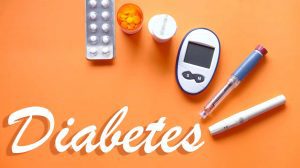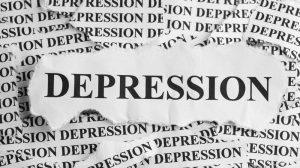About 80% of people will suffer from low back pain at some point in their lives. What causes these pains? What are the symptoms? What are the risk factors? How long might this take? How are you treated? When do you have to see a doctor? Are imaging tests necessary? The complete guide
Low back pain symptoms include pain, burning, and stabbing.
They can be sharp or dull and of mild to severe intensity.
Symptoms usually pass relatively quickly.
In rare cases, the pain in the low back is caused by reasons such as an infectious process or a tumor.
Contrary to what many think, it is better to avoid lying in bed and to continue the activity – depending on the intensity of the pain.
As you read these lines, about 15% of people in the world suffer from low back pain at one level or another. Get another statistic: about 80% of people will experience a significant episode of low back pain during their lifetime. Why him? Because the low back supports most of our body weight, and for that it pays the price.
What is low back pain?
This is a pain that usually appears in the part of the back that extends below the rib line and above the buttock line, and sometimes with projection to the buttock (one or both) and/or to the pelvis and thigh area.
What are the symptoms of low back pain?
The symptoms of low back pain include pain, burning, and stabbing. They can be sharp or dull and of mild to severe intensity (to the point where it is difficult to move or stand straight).
The symptoms can appear suddenly (eg after lifting a heavy object or as a result of a sports injury) or develop gradually. Sometimes local swelling also appears which adds to the feeling of pain.
Low back pain can be classified according to their duration:
- Acute pain (up to 6 weeks).
- Subchronic pain (6-12 weeks).
- Chronic pain (over 12 weeks).
What is the most common cause of low back pain?
Acute back pain can be the result of injuries (eg strains or tears) to the tissues that make up or support the spine in particular and the back in general, including: muscles, ligaments, tendons, joints and cartilage.
If it is, for example, a slight stretch or a small tear in one of the small muscles or in one of the small ligaments, the diagnosis is made according to the nature of the complaint and the findings in the examination.
Sometimes the source of the pain is more obvious, and is the result of medical conditions such as a herniated disc of varying degrees, from a mild herniated disc to a herniated disc. In such a case the main pain is pain radiating down the leg, and sometimes there is no back pain at all.
In old age, back pain that is accompanied by radiation to the legs is often the result of spinal canal stenosis. As a result of this narrowing, pressure is exerted on the nerve sac, sometimes along several vertebrae at the same time.
In some cases it is not possible to know what the exact cause of the pain is.
What are the risk factors for low back pain?
- Age – low back pain (in general) is more common as you get older, and they usually appear after the age of 30.
- Lack of physical activity.
- Improper physical activity or excessive activity.
- Prolonged sitting .
- Lifting heavy loads.
- Obesity .
- Pregnancy .
- Smoking .
- Alcohol consumption .
- Depression and anxiety .
- Fatigue and lack of sleep .
- Poor posture .
How long will the pain last?
In general, it can be said that 50% of acute back pain will go away in about two weeks and 80% will go away in about 6 weeks. In most cases the pain will go away with time even without treatment.
The duration and intensity of the pain cannot be predicted in advance. There are cases of strong pain that will pass within a few days, and there are cases of mild or moderate pain that will last for several weeks.
30% of people who have had back pain will suffer another episode and some will develop chronic pain.
Is acute back pain dangerous?
As mentioned, the symptoms of acute back pain usually go away on their own, and even pain caused by a herniated disc will often improve without the need for surgery. In rare cases, low back pain is caused by significant reasons such as a fracture, an infectious process or a tumor.
The risk factors for these symptoms are:
- Age over 50.
- History of malignant disease.
- Other diseases such as diabetes.
- Severe pain that appears even at rest accompanied by fever.
- Excessive use of alcohol.
- Chronic steroid treatment.
- Osteoporosis .
When do you have to see a doctor for low back pain?
In the following cases, you must be examined urgently by a doctor:
1. Pain radiating to the legs.
2. Weakness or disorder in the brackets.
3. Pain lasting over 6 weeks.
What is the treatment for low back pain?
• Contrary to what many people think, one of the most important principles for treating back pain is avoiding lying in bed and continuing the activity – depending on the intensity of the pain, of course.
Some back pain sufferers will find that moderate physical activity such as walking or swimming will improve their general condition and reduce the intensity of the pain. It is recommended to avoid strenuous activity and lifting loads.
• Local heating and in some cases local cooling may temporarily relieve the pain.
• Using anti-inflammatory drugs and pain relievers can ease the pain and reduce the inflammatory process. It is important to remember that prolonged use of anti-inflammatory drugs (NSAIDS) may cause side effects such as heartburn , irritation and bleeding from the digestive system, kidney dysfunction, and liver dysfunction .
Therefore, it is always recommended to consult the attending physician.
• Opiates are strong pain relievers that can ease the pain and cause fatigue, which may help to fall asleep in the first days of the onset of pain. However, prolonged use of narcotic drugs is associated with side effects such as addiction, constipation , drowsiness, depression , and sleep disorders .
These medicines are given only by the attending physician and under his guidance.
• Physiotherapy, stretching and chiropractic are good treatments that can provide temporary relief and continuation of routine activities. They have not been shown to result in long-term improvement.
• For people suffering from severe or persistent back pain, such as pain in the low back for example, as well as pain in other parts of the back and when there is impairment in daily activities, an assessment by a physiotherapist and the creation of a supervised activity plan is recommended.
The physiotherapist will be able to assist with guidance and instruction in order to improve the range of motion and enable a return to activity and function. The emphasis will be on strengthening the back belt, and improving flexibility and range of motion.
– Meeting with physiotherapists in general: all the information
– Guide: Physiotherapy for the low back
• Back injections – an injection for low back pain is not required in most cases of acute back pain. On the other hand, in cases of persistent back pain, there are different types of injections. These will be given after appropriate medical evaluation.
Tips for preventing and alleviating back pain
The good news is that it is possible to reduce the intensity of the pain and even prevent back pain through wise health behavior.
Here are some tips that will help you keep your back healthy:
• It is recommended to avoid prolonged sitting. It is recommended to stand up every 30 minutes of continuous sitting, and stretch your back by raising your arms and stretching them upwards.
• When sitting in general and driving in particular, it is recommended to place a small pillow or a rolled towel between the low back and the backrest. The goal is to straighten the back and thus prevent the appearance of low back pain as much as possible.
• If you have to stand in a certain position for a long time in some job, place a stool under one of your legs.
• When bending and lifting an object from the ground, especially a heavy object, it is important to make maximum use of the legs and avoid using the back muscles. To do this correctly, bend the knees with the back straight and lift up when lifting by straightening the legs only.
• The most important and effective recommendation: moderate physical activity such as walking or swimming and various gymnastics exercises, may reduce and even prevent back pain!
Is an X-ray, CT or MRI necessary?
In most cases, there is no need for photography or imaging in the event of acute back pain. X-rays and additional tests will be required in case of pain that appears after injury, history of malignant disease, fever, diabetes, age over 50, sphincter disorders, weakness, pain at rest, and osteoporosis.
Imaging tests that the doctor can request are: x-rays, bone mapping , CT , MRI . The test of choice depends on the medical problem the doctor suspects. It is important to remember that the diagnosis does not depend on the imaging tests alone, but on their combination with the patient’s medical history and physical examination.
These imaging tests may have the opposite effect than expected. In many people, you can often see changes in the vertebrae of the spine or in the spaces between them (in the spaces between the discs). These findings are usually not the cause of the back pain, and are common even in people without back pain.
And what about the possibility of surgery?
Surgeries are only necessary for a small minority of low back pain sufferers.
Spinal surgeries are usually intended to improve the patients’ quality of life. Contrary to popular belief, they are safe and involve a low percentage of complications. The surgeon will consider the patient’s complaints and suitability for the imaging tests, and then decide whether to recommend surgical treatment – and if so, which one.












Add Comment